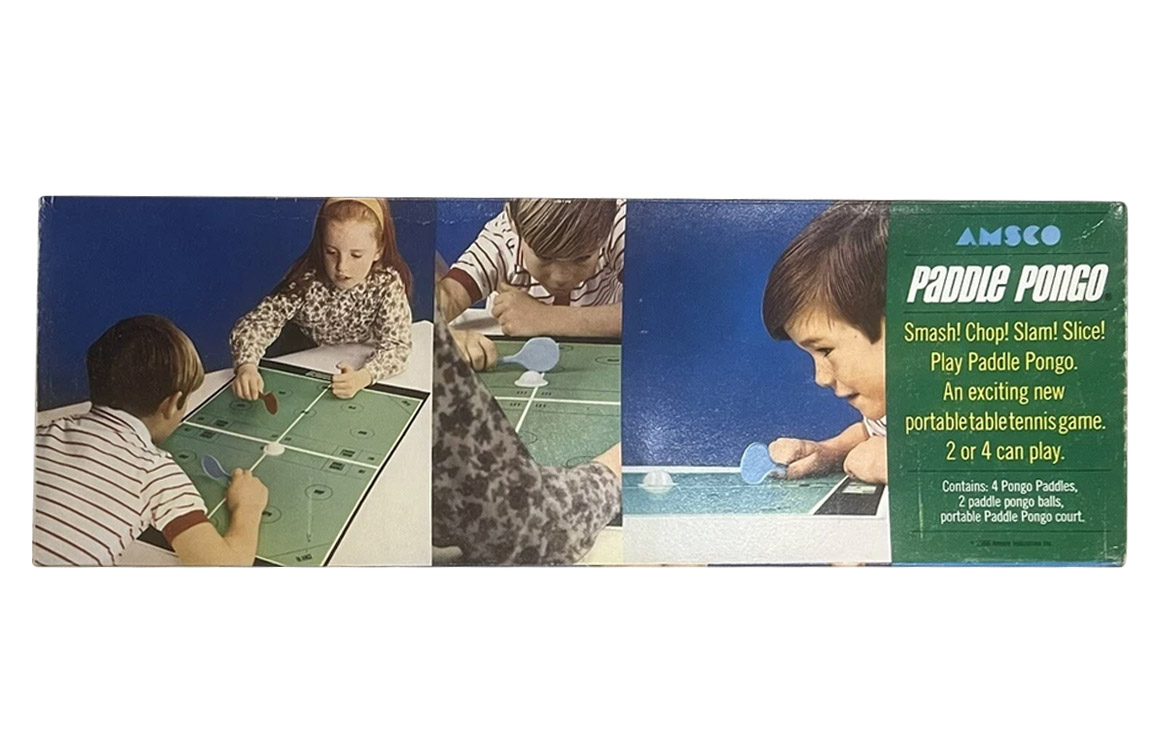“Smash! Chop! Slam! Slice!”
Released by Amsco in 1966, Paddle Pongo was a tabletop game that combined elements of table tennis and shuffleboard.
GAMEPLAY
To set up, the fold-out court was placed on a flat surface. A game accommodated up to four players, either solo or in teams of two.
Play began with a test volley: the ball had to cross the net line three times. The winner of this rally earned the first official serve.
To serve, players placed the ball in the Safety Zone and struck it with their paddle. The server was allowed two attempts to get it over the net line. Serves alternated every five points.
Points were scored when an opponent failed to clear the net, hit out of bounds, or landed in either the Out or Double Bounce zones. A player scored by landing the ball in one of the four marked zones—Drop, Smash, Spin, or Chop. If the ball landed in the Safety Zone, play continued with no point awarded.
Games were played to either 11 or 21 points, with a win requiring a two-point lead. A tied score at 10–10 or 20–20 was called Deuce, and players alternated serves until one led by two. Matches were best two out of three games.
In doubles, teammates alternated hits and switched positions after each service change. Serves were made diagonally, similar to tennis.
Penalties were given if a player rested their hand or paddle on the court or struck the ball before it stopped on their side. Either infraction awarded a point to the opponent.
IN THE BOX
A complete game included the portable Paddle Pongo court, two Paddle Pongo balls, and four Pongo Paddles. Instructions were printed on the bottom of the box.
COLLECTOR CONSIDERATIONS
Paddle Pongo sets are collectible for their 1960s novelty and Amsco branding. Complete sets are harder to find, with one or both of the original balls missing and the fold-out board showing signs of wear.
Note: If you buy something using the eBay link in this story, we may earn a small commission. Thank you for supporting independent toy journalism!



